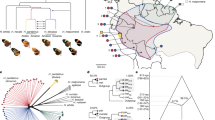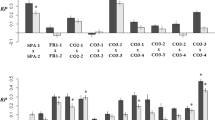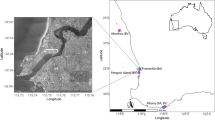Abstract
SPECIES hybrids have been reported in Petunia1 and Lycopersicum2 which can only be made in one direction, namely, when the self-fertile species of the pair is used as female parent and the self-incompatible one as male3. This phenomenon, which may be called ‘unilateral hybridization’, also occurs with some species of Antirrhinum.
This is a preview of subscription content, access via your institution
Access options
Subscribe to this journal
Receive 51 print issues and online access
$199.00 per year
only $3.90 per issue
Buy this article
- Purchase on SpringerLink
- Instant access to full article PDF
Prices may be subject to local taxes which are calculated during checkout
Similar content being viewed by others
References
Mather, K., J. Genet., 45, 215 (1943).
McGuire, D. C., and Rick, C. M., Hilgardia, 23, 101 (1954).
Lewis, D., VIIIth Botanical Cong. (Paris, 1954).
Baur, E., Z.I.A.V., 63, 251 (1932). Hackbarth, J., Michaelis, P., and Scheller, G., Z.I.A.V., 80, 1 (1942).
Author information
Authors and Affiliations
Rights and permissions
About this article
Cite this article
HARRISON, B., DARBY, L. Unilateral Hybridization. Nature 176, 982 (1955). https://doi.org/10.1038/176982a0
Issue date:
DOI: https://doi.org/10.1038/176982a0
This article is cited by
-
Evaluating species nonmonophyly as a trait affecting genetic diversity: a case study of three endangered species of Antirrhinum L. (Scrophulariaceae)
Plant Systematics and Evolution (2010)
-
Testing a hypothesis of unidirectional hybridization in plants: Observations on Sonneratia, Bruguiera and Ligularia
BMC Evolutionary Biology (2008)
-
Compatibility studies in three wild species of Lycopersicon
Acta Physiologiae Plantarum (2001)
-
Natural hybridization between an outcrossing and a selfingPhlox (Polemoniaceae): The maternal species of F1 hybrids
Plant Systematics and Evolution (1999)
-
Cross-incompatibility between two sympatric polyploid Solanum species
Theoretical and Applied Genetics (1981)



